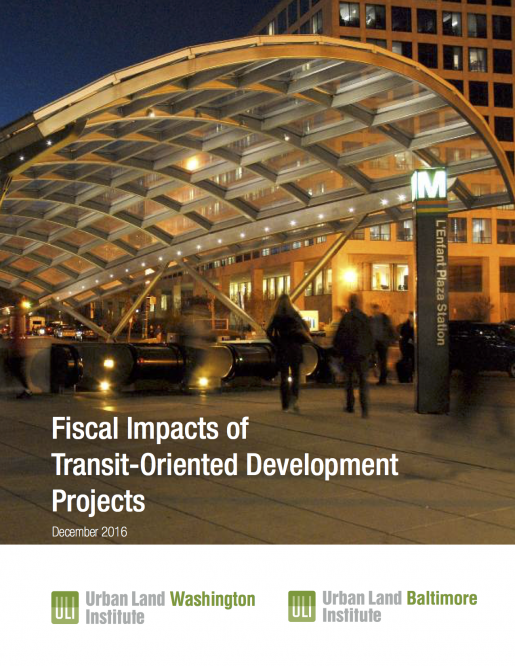Fiscal Impacts of Transit-Oriented Development Projects
Transit-oriented development (TOD) is a responsible fiscal choice for local governments and can actually save local governments money, as detailed in Fiscal Impacts of Transit-Oriented Development (TOD) Projects. This report, based on research undertaken by the Baltimore-Washington, D.C. TransitOriented Development (TOD) Product Council, was prepared by Dr. Dean Bellas, president of Urban Analytics and a member of the TOD product council. The analysis found that TOD not only “pays its own way” but also subsidizes nonTOD development in cities and counties.
This report, based on a study of nearly 10,000 TOD and nonTOD apartment units located within the Baltimore-Washington, D.C. metropolitan region, shows that local governments reap substantial fiscal benefits from transit-oriented development, including higher net tax revenues and lower impacts on public services from people who live near transit. Three TOD case study projects were located in close-in suburbs in the region, and one was located in the City of Baltimore’s downtown core.
The Baltimore-Washington, D.C. TOD Product Council decided to undertake this research and fiscal analysis in response to often-stated opposition in the Baltimore-Washington, D.C. metro region to the development of multifamily apartments and condominiums projects near new transit stops. Opponents generally oppose the level of density these projects are permitted on the grounds that increased density will place a greater burden on public services such as public schools. This sentiment, also heard in other regions across the U.S., is directly opposite to ULI’s responsible development principles, which encourage greater housing density in transit-oriented development to achieve a variety of environmental, health, and social objectives.
